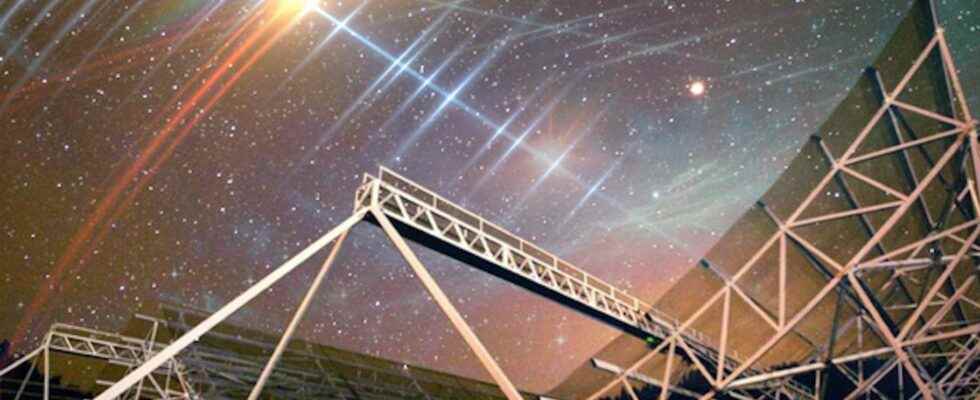You will also be interested
[EN VIDÉO] Repetitive rapid radio bursts The origin of fast radio bursts — or Fast Radio Burst (FRB) — remains mysterious. Some emit a single, unique flash of radio waves. Others, rarer, it seems, emit flashes repeatedly. No doubt the result of an orbital movement. But the exact mechanism remains to be clarified. © NRAO Outreach
Since the observation of the first of them, the fast radio bursts — them fast radio bursts or FRB, as the English say — never cease to intrigue astronomers. They usually last only a few milliseconds. And researchers are still struggling to explain the exact origin. Especially since they have just discovered a new and strangest case. FRB 20191221A. A rapid radio burst that spans three seconds. Made up of flashes of radio waves that repeat every 0.2 seconds. With the regularity of a beating heart!
The source of this FRB is in a galaxy billions of light-years from Earth. Researchers believe it may have come from a magnetara fairly rare form ofneutron star known to emit strictly periodic signals.
Astronomers have detected a strange ‘heartbeat’ signal in the depths of space — but what is it? ????
Scientists at the Massachusetts Institute of Technology (MIT) were caught by surprise after detecting a radio signal that emits periodically “like a heartbeat”. pic.twitter.com/mdOa6ANdIs
— ???????? Dunken K Bliths ???????? (@DunkenKBliths) July 14, 2022
A first truly periodic fast radio burst
Recall that most fast radio bursts observed by researchers so far emit flashes for only a few milliseconds before dying out. Some, however, seem periodic. They emit flashes randomly for a few days. Then pause. Before resuming their broadcasts. But FRB 20191221A is the first to be truly periodic.
Something to think about pulsar and to the magnetars which emit radio flashes in the Milky Way. Or almost. Because FRB 20191221A is over a million times brighter! Possibly due to some mechanism or event that caused it to emit extremely bright flashes for three seconds. Just when astronomers were straining their ears. To learn more, researchers will need further observations of this new FRB. And others too who will enrich their understanding of the phenomenon.
Interested in what you just read?
